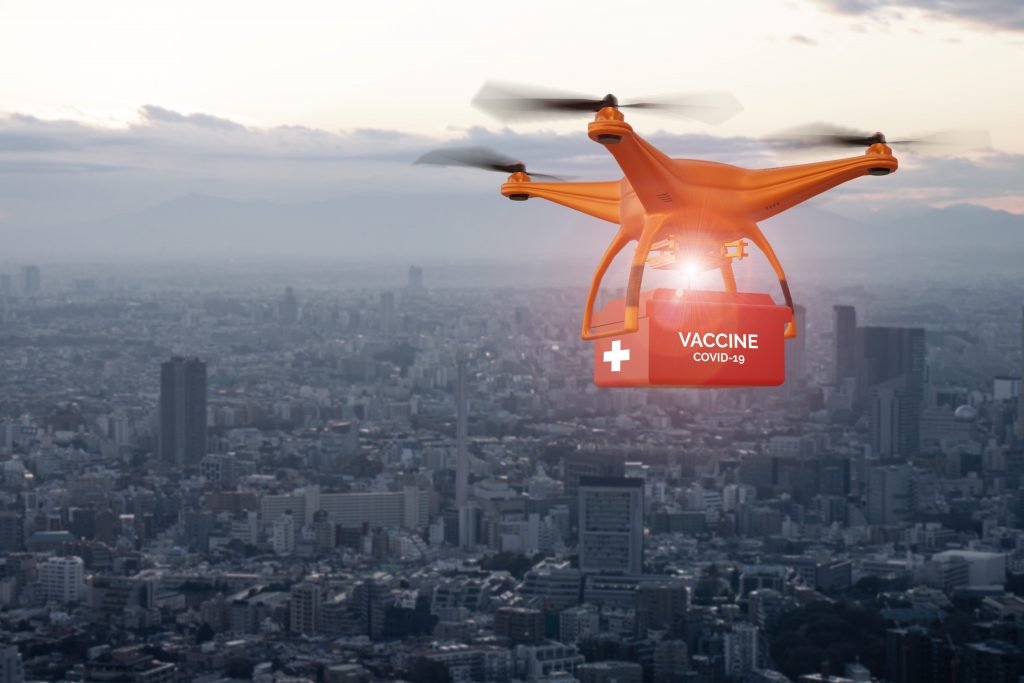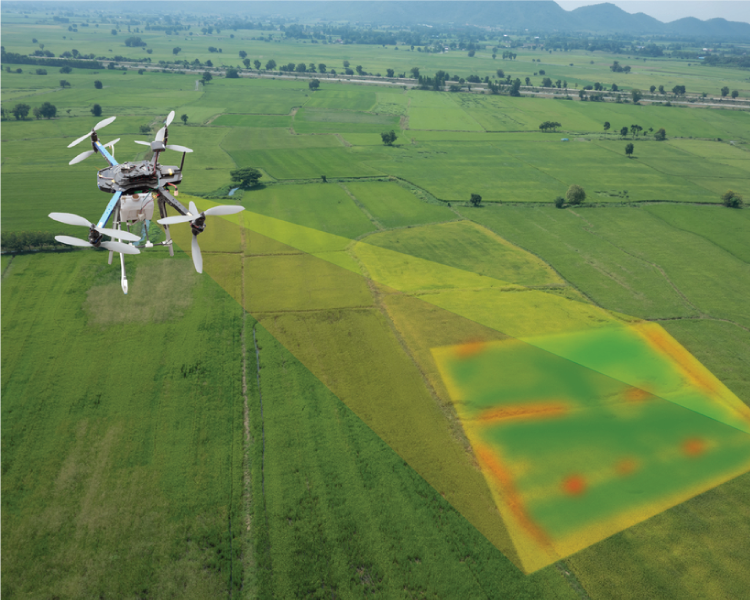As the Pandemic swept across the globe, Covid19 brought the entire world to a standstill. Governments and authorities shut down human contact to slow the spread of the virus. This invisible killer that is wreaking havoc has to be stopped. Scientists tried to understand the virus, and medical professionals tackled the ensuing medical crisis. Others at the forefront of the battle against coronavirus sought ways of doing so while limiting human to human contact. In that battle, drone technology has proven to be a vital tool. So, let’s look at how drones are helping India in the fight against coronavirus during the Pandemic.
Drones in Pandemic – 5 ways it helps India to combat Covid-19
1. Mass Surveillance
Covid-19 forced governments to enact legislation quickly to limit movements and prevent contact. But getting the message out to everybody – even those in more remote parts of the country and monitoring movements was a huge logistical challenge. Moreover, restrictions will only work if people abide by them. And with limited resources, Police and local authorities would have face an impossible task without the assistance of drones.
Authorities used drones to identify and break up areas where mass gatherings risk the spread of the virus. In many cases, Police use drones during the Pandemic with sirens or broadcasting audio messages ordering people to disperse. In so doing, police officers can break up mass gatherings without having to get close to people.
Drones were particularly effective in the Dharavi district of Mumbai, home to more than 1 million people. Here, police officers connect their mobile phones to the drones attached with loudspeakers. And they are monitoring the drone footage and dialling in to speak directly to anybody breaching the rules. Delhi police are also using drones to monitor busy areas such as Ghazipur Mandi.
In other areas, drones used to educate residents on current lockdown rules. Again, this is likely to become increasingly relevant as we emerge from lockdown with different regulations in place across the country.
2. Delivering Supplies and Medicines
With shops closed and residents ordered to stay inside, it was incumbent on the authorities to find ways of ensuring people had access to essentials. Without these, officials knew there was a high risk that people might refuse to abide by the rules, which would have worsened the situation.
Drones used to deliver medicines and protective equipment during the Pandemic. This limits travel and human to human contact. Drones have also used to transport goods to areas under quarantine and to collect Covid-19 samples for testing. The data gathered from testing is vital to authorities to track and tackle the virus’s spread. In addition, they help deliver supplies and other resources to areas where they are most needed.
Authorities in Telangana have been at the forefront of drone innovation for tackling Covid-19. They recently announced that they would be trialling a system of delivering vaccines using UAVs. India’s vaccination programme is one of the largest in the world. The country’s geographical size, population, and vast differences in topography across the nation also make it one of the biggest logistical challenges faced by any government. Authorities in Telangana see drones as the quickest and safest way to get vaccines out to more remote areas. Karnataka also plans to introduce drone distribution of vaccines, while the Medical Research Council of India has permitted to conduct an extensive study in this regard.
3. Spraying and Sanitizing
Identifying areas with high infection rates or dispersing crowds is one thing – disinfecting those locations is another. The whole purpose of breaking up mass gatherings is to slow down the spread of the virus. But it’s widely known that Covid-19 can live on surfaces for hours. So, once an area has been cleared, unless it is also disinfected, the damage limitation is reduced.

Municipal authorities in Madurai, Tamilnadu, have been using drone technology to disinfect the coronavirus wing of local city hospitals. Hospitals run the risk of mass transmission as they are the destination for coronavirus patients. They are also the workplace of those on the frontline of fighting the virus, so they must be kept sanitized. Usually, Drones used to spray fertilizer and pesticides on crops. During the Pandemic, this technology is now helping to rid India of a deadly virus.
Drones can cover infected areas up to 50 times faster than traditional methods of disinfecting. And without people having to put themselves at risk by working in the most dangerous places.
Drones are still doing their bit on farms too. With the Pandemic has heaped pressure on the economy and adversely affected millions of jobs, good harvests and stable food prices will be a crucial aspect of India’s Covod-19 recovery. Drones used for their more conventional task of promoting healthy crops and getting rid of locusts and other pests that might otherwise have catastrophic effects on post-Covid India.
4. Temperature Checking
During the pandemic, one of the biggest challenges facing individuals, medical staff, and governments worldwide is that Covid-19 spreads so rapidly and that so many people are asymptomatic. The fact that people can be carriers and spreaders with almost no noticeable symptoms is widely believed to be one of the reasons the virus became a pandemic in the first place.
Thermal imaging is another long-standing benefit of drone technology mainly used for inspection surveys. But during the Pandemic, Drones has been adapted to identify peoples temperate at homes or apartment blocks and mark them out for surge testing. China used drones to take individual temperatures of residents living in tower blocks without nurses having to enter properties. As drones become an increasingly important part of India’s fight back against the disease, there are moves to introduce similar schemes in some areas of the country.
5. Broadcasting
In addition to broadcasting public health messages, drones have proved vital in allowing news agencies to keep reporting. At times of national crisis, people must be kept up to date with what is going on around them – especially when they cannot go out and see for themselves.
Journalists and camera crews use drones to capture footage on the containment zone to help people inform and find some good news important in bringing hope to people in the Pandemic.
Conclusion
Drones are not entirely new to India. However, in recent years, authorities across the country have begun to embrace this advancement in technology. Which can provide vast amounts of precision data, use AI to make accurate predictions about future outcomes, and complete mammoth tasks in a fraction of the time they can be done using more traditional methods.
Throughout the Pandemic, drones have been used directly in combating the spread of the virus. While also being deployed for more conventional purposes to keep things moving and allow authorities to stay focused on the threat posed by Covid-19. The Uttarakhand floods in February-2021, for example, required a huge effort on the part of rescue teams in identifying and rescuing survivors. Coming amid a pandemic of unprecedented proportions, this disaster posed more challenges than usual for rescue workers who faced the added threat of contracting Covid-19 while searching. Using drones to help find those trapped among the debris reduced the amount of physical ground. Therefore, exposure to potential infection while also increasing the speed at which survivors were spotted and rescued.
Covid-19 has seen governments worldwide seek new technologies to tackle the Pandemic most safely and effectively. Not only did the Pandemic bring society to a halt and take the lives of millions, but it also threatened to destroy jobs and economies. Drone technology has been a significant part of the battle against coronavirus. Authorities have seen just what can be achieved from a distance using the latest state of the art technology. As a result, drones have sealed their place in the future of the world and the future of India.









